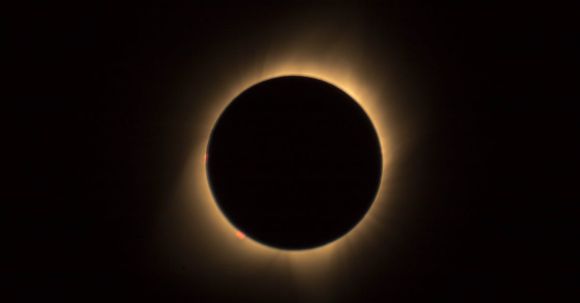Solar eclipses have captivated human beings for centuries. The sight of the moon momentarily blocking out the sun, plunging the Earth into temporary darkness, is a truly awe-inspiring event. But how do scientists accurately predict when and where these celestial phenomena will occur? In this article, we will delve into the fascinating world of solar eclipse prediction and explore the methods used to make these predictions.
Understanding the Mechanics of Solar Eclipses
Before we can discuss the prediction of solar eclipses, we must first understand the mechanics behind them. A solar eclipse occurs when the moon passes between the Earth and the sun, casting a shadow on our planet. This alignment of the three celestial bodies can only happen during a new moon phase, when the moon is positioned directly between the Earth and the sun.
The Role of Orbital Mechanics in Predicting Solar Eclipses
To accurately predict solar eclipses, scientists rely on the principles of orbital mechanics. The Earth, moon, and sun all follow predictable paths in space, thanks to the laws of physics. By calculating the positions and movements of these celestial bodies, astronomers can determine when and where solar eclipses will occur.
Using Mathematical Models to Make Predictions
Mathematical models play a crucial role in predicting solar eclipses. These models take into account various factors, such as the elliptical orbits of the Earth and moon, their relative distances from the sun, and the inclination of the moon’s orbit. By inputting these parameters into complex equations, scientists can calculate the precise moments when solar eclipses will occur.
The Importance of Accurate Astronomical Data
Accurate astronomical data is essential for making reliable eclipse predictions. Astronomers use powerful telescopes and instruments to measure the positions and movements of celestial bodies with great precision. This data is then fed into computer models, which can simulate the motions of the Earth, moon, and sun over long periods of time. By comparing the model’s predictions with actual observations, scientists can refine their calculations and improve the accuracy of eclipse predictions.
The Role of Lunar and Solar Cycles
In addition to orbital mechanics and mathematical models, lunar and solar cycles also play a role in predicting solar eclipses. The moon’s orbit around the Earth is not perfectly circular but slightly elliptical. This means that the distance between the moon and the Earth varies throughout its orbit. When the moon is closer to the Earth, it appears larger in the sky and can fully block out the sun, creating a total solar eclipse. Conversely, when the moon is farther away, it appears smaller and can only partially cover the sun, resulting in a partial solar eclipse.
Predicting the Path of Totality
One of the most challenging aspects of eclipse prediction is determining the path of totality. This refers to the narrow strip on the Earth’s surface where a total solar eclipse can be observed. The path of totality can be only a few kilometers wide and may traverse different continents or countries. Scientists use a combination of mathematical models, astronomical data, and historical observations to determine the precise path of totality for each eclipse.
Conclusion: Advancements in Technology and Science
Thanks to advancements in technology and our understanding of orbital mechanics, we can now predict solar eclipses with remarkable accuracy. Mathematical models, accurate astronomical data, and the study of lunar and solar cycles all contribute to our ability to forecast these celestial events. As our knowledge of the universe continues to expand, we can expect even more precise predictions in the future, allowing us to witness and marvel at the beauty of solar eclipses.





